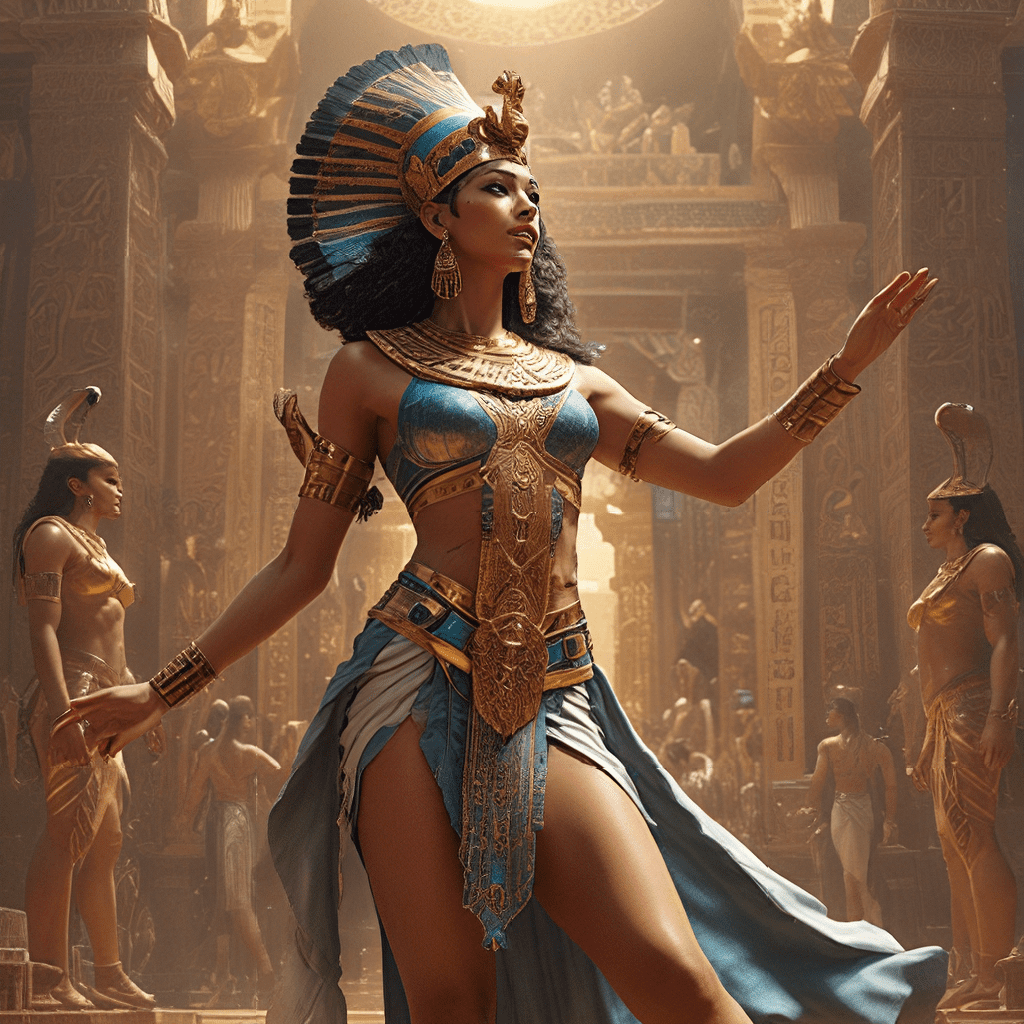The Dance of the Gods: A Celebration of the Divine in Egyptian Mythology
In ancient Egypt, dance wasn’t just entertainment. It was a sacred act, a way to connect with the divine. The Egyptians believed their gods and goddesses were powerful beings who moved with grace and rhythm. Through dance, they could honor these deities, understand their roles in the universe, and even influence their actions.
1. Dancing in Ancient Egypt: More Than Just Entertainment
Ancient Egyptians danced for many reasons. They celebrated harvests, performed rituals, and even used dance in healing ceremonies. They believed that dance could bring blessings and ward off evil spirits. Wall paintings and sculptures show people dancing in various styles, from elegant movements to energetic leaps. Even the ancient gods were depicted dancing in their temples, showcasing their power and presence.
2. The Dance of Creation: Unveiling the Cosmic Order
The Egyptians believed the world was created through a divine dance. The god Atum, often depicted as a self-created being, is said to have emerged from the primordial waters and danced into existence, bringing forth the sun, moon, and stars. His dance also set the cosmic order, establishing the laws of nature and the cycle of time. This dance of creation was a vital concept in Egyptian mythology, emphasizing the power and beauty within the universe.
3. The Divine Choreography: Gods and Goddesses in Motion
Each god and goddess had a unique dance associated with their power and personality. The sun god Ra, for example, was often depicted dancing across the sky in his solar boat, bringing light and warmth to the land. The goddess Hathor, representing love and joy, was known for her graceful, sensual movements. The god Thoth, the patron of knowledge and wisdom, was depicted with a rhythmic, intellectual dance. These dances weren’t just for entertainment, but also symbolized their powers and roles in the universe.
4. The Sun God’s Dance: Ra’s Journey Across the Heavens
Ra, the sun god, played a crucial role in Egyptian mythology. He was responsible for creating the world, bringing light and warmth, and ensuring life on Earth. Every day, Ra journeyed across the sky in his solar boat, battling monsters and darkness. This journey was often depicted as a dance, showcasing the sun’s power and the cycle of day and night. The sun’s movement was seen as a vital dance that sustained life on Earth.
5. The Dance of Life and Death: Osiris, Isis, and the Cycle of Rebirth
The god Osiris and his sister-wife Isis embodied the cycle of life and death. Osiris, the king of the underworld, was murdered by his brother Seth, but Isis resurrected him. However, Osiris remained in the underworld, ruling over the dead. This story is often depicted as a dance, showcasing the struggle between life and death, and the eternal cycle of rebirth. The dance highlights the important role of both life and death in the Egyptian worldview.
6. The Sacred Rhythms of the Nile: Water, Fertility, and Divine Dance
The Nile River was the lifeblood of ancient Egypt, providing water for crops and sustaining life. The annual flooding of the Nile was seen as a gift from the gods, bringing fertility and prosperity. The Nile’s rhythms were often linked to divine dance, representing the cycle of life, death, and rebirth. The god Hapy, who personified the Nile, was often depicted dancing, symbolizing the river’s power and the blessings it brought.
7. The Dance of the Pharaoh: Connecting Ruler to the Gods
The pharaoh was seen as the earthly representative of the gods, and his role was to maintain order and ensure the well-being of the people. The pharaoh’s dance, often performed during religious ceremonies, symbolized his connection to the divine and his ability to rule justly. These dances were carefully choreographed, including specific movements and gestures that reflected the pharaoh’s power and connection to the gods.
8. The Ritual Dance: A Bridge Between the Mortal and Divine
Ritual dances were a vital part of Egyptian religious life. These dances were carefully choreographed, involving specific steps, gestures, and even costumes. They were performed in temples, during festivals, and even during funerals. Through ritual dance, the Egyptians believed they could connect with the divine, receive blessings, and influence the gods’ actions. The dances were a way to bridge the gap between the mortal and the divine world.
9. The Legacy of the Divine Dance: Echoes in Modern Culture
The ancient Egyptians’ belief in the power of dance continues to inspire artists and performers today. The graceful movements, symbolic gestures, and spiritual significance of Egyptian dances have been incorporated into modern dance forms. These forms often explore themes of life, death, rebirth, and the divine, echoing the ancient Egyptians’ deep reverence for the dance.
10. Beyond the Steps: Exploring the Deeper Meaning of the Dance
The dances of the ancient Egyptians weren’t just about physical movements. They were deeply symbolic, representing the gods’ powers and the Egyptians’ beliefs about the universe. The dances told stories, conveyed emotions, and even influenced the course of events. They were a powerful way to connect with the divine and understand the mysteries of life, death, and the world around them.




